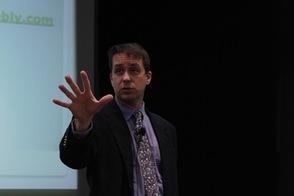
As we face various challenges, from lifestyle diseases to environmental issues, improving community health and wellness requires a collective effort. This effort includes not only individual actions but also broader community initiatives and policy changes. Through this article, we'll explore nine ways to enhance the health and well-being of our communities, focusing on nutrition, professional contributions, community design, and more.
Promoting Nutritious Eating and Food Security
One of the cornerstones of a healthy community is access to nutritious food. Food security isn't just about having enough food; it's about having the right kind of food. Nutritious eating can be promoted through community gardens and local farming initiatives, which not only provide fresh produce but also bring people together for a common cause. Educating people about the importance of a balanced diet, starting at the school level and extending into adult education, can make a significant difference. Local businesses can also play a crucial role by offering healthy food options at affordable prices, making good nutrition accessible to more people.
Additionally, for those who find it challenging to meet their nutritional needs through diet alone, incorporating health supplements can be beneficial. For instance, Proplant Complete Shake is a convenient option that helps boost protein intake and comes in tasty vanilla and chocolate flavors, contributing to overall health and well-being.
Encouraging Professions That Contribute to Community Health
For communities to thrive, they need professionals dedicated to improving health and wellness. Healthcare workers, such as doctors and nurses, are at the forefront of this battle, providing care and preventive measures to keep communities healthy. Social workers and mental health counselors address social determinants of health, offering support and resources to those in need. Educators also play a pivotal role in imparting knowledge on health and wellness from an early age. To support and grow this essential workforce, communities can encourage participation in online nurse educator programs and other training opportunities, which prepare professionals to meet the diverse health needs of their communities.
Enhancing Physical Activity Through Community Design
Physical activity is essential for maintaining good health, but not everyone has easy access to safe spaces where they can exercise. Community design plays a significant role in this. By incorporating more green spaces, like parks and gardens, and developing bike trails and walking paths, communities can encourage their members to lead more active lifestyles. Safe and accessible recreational facilities not only promote physical health but also encourage social interactions and community spirit. Urban planning that prioritizes pedestrian-friendly environments can significantly impact the overall health and wellness of a community.
Strengthening Mental Health Support Systems
Mental health is as important as physical health, yet it often doesn't receive the attention it deserves. Strengthening mental health support systems in the community can change this. By providing accessible services and support groups, communities can offer a safety net for those struggling with mental health issues. Initiatives to reduce stigma and promote mental health literacy are essential, as they encourage people to seek help without fear of judgment. Schools and workplaces can integrate mental health support, creating environments where everyone feels supported and understood.
Advocating for Environmental Health Initiatives
A clean environment is crucial for good health. Pollution and other environmental hazards can have a significant impact on our well-being. Communities can come together to tackle these issues head-on. Initiatives like planting trees and organizing clean-up drives can significantly improve air and water quality. Additionally, advocating for policies that support sustainable practices can help ensure a healthier environment for future generations. By taking these steps, we're not just protecting our health but also the planet's.
Implementing Preventive Healthcare and Education
Preventive healthcare is all about stopping illness before it starts. This can be achieved through vaccination campaigns and regular health screenings. These initiatives can catch health issues early or prevent them entirely, leading to longer, healthier lives. Health education plays a crucial role here, too. By educating people about the risks of certain diseases and how to prevent them, we empower individuals to take control of their health. Community health fairs and mobile clinics are great ways to increase accessibility to these services, ensuring everyone has the opportunity to stay healthy.
Leveraging Technology for Health Education and Access
Technology has the power to transform healthcare and education. Telehealth services, for example, can make it easier for people to access medical advice and support, regardless of their location. This is particularly important for communities in remote areas. Additionally, mobile apps and online platforms can provide valuable health education resources, helping people to learn more about maintaining their health and wellness. Ensuring everyone has access to the internet is critical in this effort, as it opens up a world of information and support that can make a real difference in people's lives.
Strengthening Local Economies and Infrastructure
A strong local economy and solid infrastructure can indirectly improve community health by providing job opportunities, reducing poverty, and enhancing the overall quality of life. Communities can support local businesses and encourage sustainable economic practices that contribute to the health and well-being of all residents. Improving public transportation, ensuring a clean water supply, and maintaining safe public spaces are also crucial steps in building a healthy community infrastructure.
Fostering Collaborations Among Community Organizations
No single organization can address all the aspects of community health and wellness alone. Therefore, collaborations among various community organizations are necessary. This includes partnerships between healthcare providers, educational institutions, non-profit organizations, and local businesses. By working together, these organizations can pool their resources, knowledge, and expertise to tackle health issues more effectively. Collaborations can lead to innovative solutions, such as combined health and social services centers, community-wide health campaigns, and joint efforts to improve local environmental conditions. These partnerships not only enhance the reach and impact of health initiatives but also strengthen the community's ability to respond to health challenges collectively.
Wrapping Up
Creating a healthier community is a shared responsibility. It's about more than just individual actions; it requires a collective effort from everyone in the community. From promoting nutritious eating and encouraging physical activity to advocating for a clean environment and accessible healthcare, every step we take makes a difference. By leveraging technology and building strong support networks, we can ensure that everyone has access to the resources they need to live a healthy life.



























